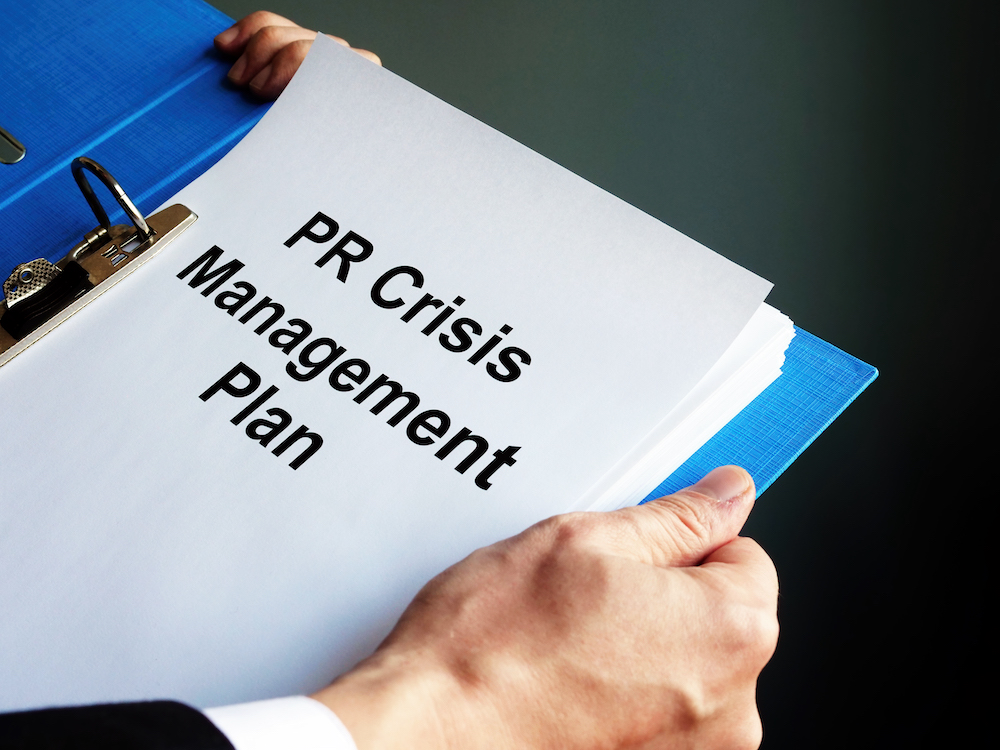
PR Crisis Management Basics
When you’re running a business or non-profit, it’s important to deploy PR crisis management basics in advance of a crisis. In doing this, you’ll be ready to handle PR, media inquiries, and customer concerns to navigate a PR crisis with flying colors. PR crisis communication is the process of gathering information related to the crisis, strategizing the most effective ways to deal with the crisis, and then communicating about the crisis to investors, customers, and the general public.
What Is PR Crisis Management?
PR crisis management involves the processes & procedures for preparing a business or non-profit to be able to quickly & efficiently deal with a crisis event that threatens the organization’s brand, reputation, products, and / or customers. Effective PR crisis management is designed to either prevent or lessen the damage from a business crisis. Some examples of PR crises include the following:
• Product failure
• Product intentionally tainted
• Product unintentionally tainted
• Inability to provide product
• Ethical breach of a company, non-profit, or company executive brought to light
• Offensive advertising, marketing, or PR that creates a controversy and backlash against the organization
• Offensive statements or actions from a company official
• Worker deaths or illness because of the organization
What’s The Number One Strategy For Dealing With A PR Crisis?
The number one strategy for dealing with a PR crisis is to develop a Crisis PR Plan in advance of a catastrophic event or occurrence. Every business, non-profit, or organization has vulnerabilities that could turn into crises. These potential negative events help drive the development of a crisis PR plan, by brainstorming the “what if” scenarios that could turn into disasters, and having a response plan ready to go if such a crisis occurs.
Why Is PR Crisis Management Important?
PR crisis management is important because it helps protect an organization from the negative effects of a crisis event. It also helps the organization move past the crisis event as quickly as possible, and retain the goodwill of investors, customers, and / or the general public.
How To Develop A PR Crisis Management Plan
There’s a tried-and-true process for developing a PR crisis plan.
Step 1: Form your crisis communications team and define who will serve on the PR crisis team in advance of a catastrophic event.
The people on this team should include:
• The organization’s senior executive
• Division chiefs in charge of the various main departments of the organization
• The company spokesperson
• PR counsel (could be in-house or from an agency)
• Legal counsel
Step 2: Brainstorm the possible crises that could occur
The crisis team should brainstorm the top disasters that could affect the organization, with a focus on the top five.
Step 3: Develop response plans for the most likely crises
The crisis team should then develop individual response plans for how to handle the most likely crises. That response plan will include:
• Activating the crisis team
• Gather facts and assess the crisis
• Review key messaging points that should have been brainstormed in advance of the crisis, and modify them as needed based on the specific circumstances of the crisis
• Finalize messaging and company actions related to the crisis that will be deployed, and start the outreach of the messaging & actions to various affected stakeholders:
o Investors
o Customers
o The General Public
Step 4: Monitor the responses to the messaging from your organization
Multiple team members should be monitoring the response to messaging on multiple information channels:
• TV
• Print media
• Social media
• Public reaction
Once the crisis team has analyzed how the messaging is being received, the messaging can be modified as needed, or stay the course to navigate the crisis.
Step 5: Post-Crisis mitigation & process change
Once the PR crisis has been navigated, disasters can be used to change processes or procedures that led to the crisis in the first place. Once new procedures have been put in place to prevent the catastrophic event, those actions provide the opportunity to continue to communicate to stakeholders: investors, customers & the general public – to show that the organization is taking meaningful action to prevent the catastrophe in the future.
The bottom line is that every business or non-profit should have a PR crisis plan in place. To do so, deploy the 5-step process to create a crisis plan and attend to crisis PR basics.
Need help developing a PR crisis plan? Contact DeWinter Marketing & PR for assistance.

